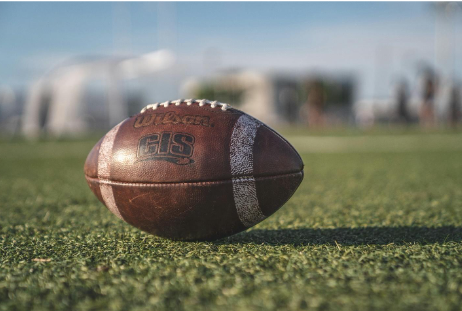 NFL fantasy football has garnered popularity over the years, attracting millions of participants every season. In addition to being just a game, it is an engaging hobby that lets you compete and manage your own team of NFL players. The key to having a robust football fantasy team lies in the drafting. Fantasy drafts are hard as there are a lot of factors to keep in mind, such as the scoring system, positional value, upside, and team needs, among others.
NFL fantasy football has garnered popularity over the years, attracting millions of participants every season. In addition to being just a game, it is an engaging hobby that lets you compete and manage your own team of NFL players. The key to having a robust football fantasy team lies in the drafting. Fantasy drafts are hard as there are a lot of factors to keep in mind, such as the scoring system, positional value, upside, and team needs, among others.
For this reason, it is easy to get overwhelmed and make mistakes at the drafting stage. But this should not worry you as in this article, we discuss a round-by-round draft strategy guide to help you maximise value with every pick and be on the winning team.
Get Expert Insights
If you’d like to take your NFL fantasy football draft strategy to the next level, you need to take advantage of the power of communities. These communities provide a quick way of getting lots of information and analysis.
There are platforms such as Whop that allow users to find and analyse different communities. Each has a speciality, and many of them offer fantasy football expertise.
When you join a Fantasy Football community on Whop, you’ll meet experts who have been in the game for long. They frequently share their insights, strategies, and analysis, so you can always know what the best in the game are doing. You can also discuss with other community members and stay updated on the latest trends and news that can be helpful in selection.
Know the Rules
You gain a lot by setting aside time to understand your league rules. Here are some of the rules and things you should consider:
- PPR, half-point, or standard scoring
- Weight of the scoring at every position
- Roster positions
- Is this league composed of 8, 10, 12, or 14 persons?
- When is the draft?
- How much time do you have between the picks?
Once you understand the rules of the league, you will realise the unparalleled roles they play towards creating a dominating fantasy football league.
Load Up on Running Backs
Another vital tip when drafting your football fantasy picks is loading up on running backs. You need to get into the draft knowing the running backs who will receive a lot of volume and those who are in a minimal committee. In recent years, football coaches often utilise multiple running backs (a committee) instead of depending on a single player, an approach that splits the workload among several players. Getting a workhorse running back can therefore significantly boost your team’s success. To pass as a workhorse, a running back should get at least 70% of their team’s workload.
The general rule of thumb when drafting a solid RB is ensuring the RB has shown they can handle a full workload. Every year, the robust RB strategy becomes increasingly vital as teams are giving RBs on their roster the same equal timeshare. During fantasy football drafts, the RB position is undoubtedly the most scarce, so ensure you draft them early and get many of them.
Ground Your Team with a Solid Quarterback
Always ensure you get a strong QB who scores points consistently over the weeks. Typically, QBs score the most points yearly with 1 to 3 of them being the top scorers. The good news? It is easy to spot quarterback trends because compared to other positions, their performance is much less volatile.
Also, do not think twice about getting a backup QB for your fantasy football team. The main reason for doing so is to cover that bye week. It is also important to have a backup QB to cover injuries or poor performance.
Know the Average Draft Position
Drafting in football fantasy is akin to playing chess. You need to make a move and draft that player, lest someone else does so before you. There are several similarities between these two and knowing your ADPs for the players in that particular year is crucial. While it feels terrible to have the player you want to draft snipped by your league mates in various communities, you should ensure you do not overreach.
The key to avoiding getting sniped and drafting all your favourite players is knowing when players will be coming off the board on average. Most people follow the average draft position (ADP) and select players based on that. If you follow this approach, you are likely to miss out on the best players. To succeed, you need to think differently, sometimes picking players with high potential earlier and finding substantial value in later rounds.

